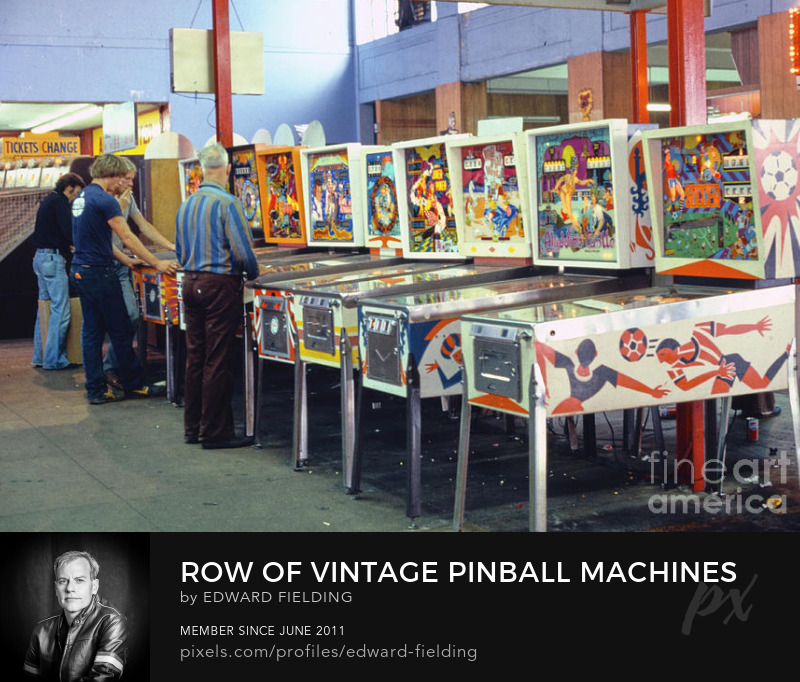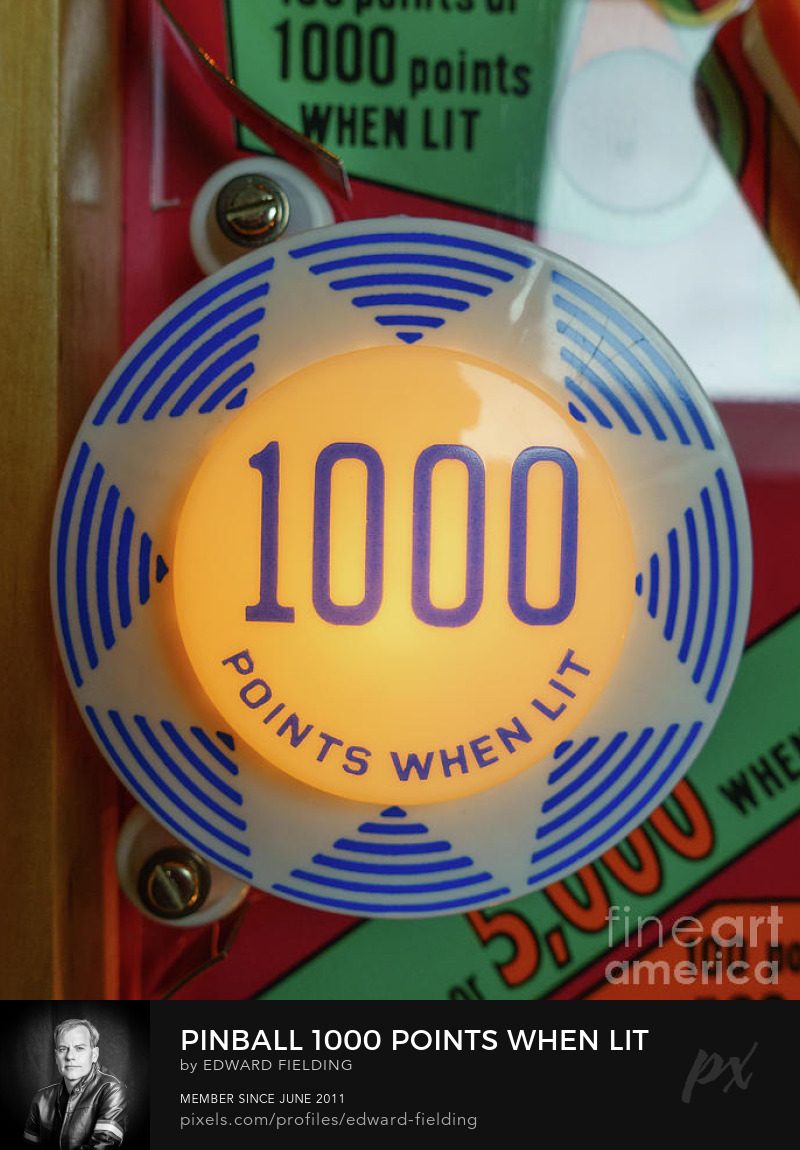If a pinball fan builds a time machine the year 1981 would be a prime destination for this was an incredible year in the history of pinball.
Arcades were hitting their zenith of popularity and the promise of new machines to play kept the teens and their disposable income coming back every weekend.
Consider this was the year that newcomer Pac Man was generating ONE BILLION dollars from arcades around the world. Meanwhile, home video game systems were just starting to come to market foreshadowing what would eventually lead to the demise of arcades.

From the design standpoint, pinball manufacturers were perfecting the new solid-state technology and leaving the old electron-mechanical designs back in the ’70.
In the year of 1981, Bally lead the pack by releasing a whopping eight games mostly all now considered classics by collectors:
- February 1981 – Flash Gordon
- April 1981 – Eight Ball Deluxe
- June 1981 – Embryon
- June 1981 – Fireball II
- August 1981 – Fathom
- September 1981 – Medusa
- October 1981 – Centaur
- December 1981 – Elektra

Williams Electronics wasn’t as strong of a force in the industry but still managed to bring out seven machines that same year.
- February 1981 – Jungle Lord
- May 1981 – Pharaoh
- June 1981 – Black Knight Limited Edition
- July 1981 – Cyclone
- July 1981 – Solar Fire
- September 1981 -Barracora
- December 1981 – Hyperball (not really a pinball as it had no flippers)
Arcade pinball players were likely to see a new game every time they went to the local arcade. Other manufactures also contributed to the Pinball Class of 1981.
Stern Electronics
- Freefall (1981)
- Lightning (1981)
- Split Second (1981)
- Catacomb (1981)
- Viper (1981)
Gottlieb
- Force II #661 (1981)
- Pink Panther #664 (1981)
- Mars God of War #666 (1981)
- Volcano #667 (1981)
- Black Hole #668 (1981)
The years ahead would see a lot of consolidation, demise, rebirth, innovations and mergers within the pinball. Some companies like Bally managed to switch over from electro-mechanical to solid-state machines and rise to the top while others like former industry leader Gottlieb were slow to make the transition and never truly recovered.
The coming bust of the arcade scene and then the rise and fall of the home video game market was just ahead, who in the hectic pace of pinball release of 1981 could have ever predicted this peak in production of new titles.

Bally’s Rise to the Top
nicovolta — Roanoke Pinball Museum
1974 – First SS prototypes: Bow and Arrow (17) and Flicker (1) using the “Bally Brain” Intel 4004 – world’s first single-chip processor.
1975 – Wizard! With over 10,000 produced, “Tommy” license, and huge backglass w/commercial-quality art… this was the blockbuster which announced to Gottlieb (and the rest of the pinball world) that Bally was, indeed, now taking over the industry. Bow & Arrow also produced this year in high quantity (over 7600). Bally’s excellent solid-state hardware platform is already primed for production.
1976 – Bigfoot concept (2 produced), an obvious early ancestor of Atari Hercules. Other games produced were Flip Flop, Old Chicago, Hokus Pokus, Aladdin’s Castle, Night Rider, Hang Glider, Captain Fantastic (another blockbuster… over 16k produced!), and Freedom which was also the first commercial SS produced in quantity. Black Jack was slated for solid-state production and thus the EM version only had 120 produced… a sign of things to come. Also let’s not forget how much solid-state practice Bally was getting via the Fireball home edition – a stupendous 10,000 produced!
1977 – Bally EM phase-out year! Only 155 Evel Knievel and 170 Mata Hari EM’s built. “Kick Off” (prod 1655) used up the last of the EM parts. Meanwhile, TWO blockbusters this year… Evel Knievel 14,000 and Eight Ball setting a new all-time record with a massive 20,230 produced… which is why you always see so many on Craigslist! 7000 for Night Rider and nearly 5000 for Black Jack as well. The SS production machine is cranking ’em out like never before.
1978 – Bally EM’s now totally gone except bingos (last big year for them). SS pinball hitting full throttle… every game released this year at least 10,000 production run! Skateball prototype built. Power Play. Mata Hari. Strikes and Spares. Lost World. Six Million Dollar Man. Playboy is the biggest seller topping 18,000 which in total makes a staggering 81,730 produced by Bally in ’78… holy moly and still not the top!
1979 – First year for widebodies: Paragon followed by Future Spa. Bally still producing games in huge numbers with the exception of Voltan at only 365. Star Trek. Kiss. Harlem Globetrotters. Supersonic. Dolly Parton. Not to be outdone by the previous year, 1979 still stands as Bally’s all-time pinball production peak at 81,967.
1980 – Production slows a little but is still healthy at 61,000 for the year. Blockbusters are Silverball Mania, Space Invaders, and Xenon but barely top 10,000 apiece. Hotdoggin’ was the second widebody of 1980… only 2050 made. Nitro Ground Shaker. Rolling Stones. Mystic. Viking. Skateball. Frontier is the rarest at only 1850.
1981 – THE peak of the early SS-era and our beloved “Class of ’81”: Flash Gordon, Eight Ball Deluxe, Embryon, Fireball II, Fathom, Medusa, Centaur, Elektra. By now, Bally’s creativity was on full boil and seemed unstoppable. HOWEVER… behind the scenes pinball production had nearly dropped in half to 36,200 for the year. Most of which only reach the 2500-3500 range except Eight Ball Deluxe at 8250 and Flash Gordon barely hitting 10,000. Alert! Video games are eating pinball’s lunch!!!
1982 – Bally’s pinball division is desperate for a breakout hit to stem the video game tsunami. They make wild swings in every direction… unfortunately missing the mark nearly every time. Vector (Vecturd) is a committee-kludge of a game. Spectrum is extremely innovative, albeit not very fun. Bally resorted to making some outright copies (Rapid Fire as Hyperball clone, Baby Pac-Man as Caveman clone). BMX had promise but was scrapped after only 406 made (was reborn in ’87 as Hardbody). Speakeasy was a throwback to old EM roulette wheel games but wasn’t that fun, and Eight Ball Deluxe LE was re-released for a quick buck to use up spare Rapid Fire cabs. Overall, not looking good… nearly 34,000 produced but most are duds and the Titanic is sinking fast.
Biggest irony of ’82? The only pinballs which sold in significant quantity were video game licenses: Mr. & Mrs. Pac-Man and Baby Pac-Man. Ouch. The vids won. They would be Bally’s last two games to reach near-blockbuster status… by a longshot.
In my opinion, this is the exact moment when Bally’s momentum ran off the railroad tracks. Oh, but what a glorious ride it was. *sniff*
Looking a bit further ahead…
1983 – The video game crash nearly takes the entire pinball industry down with it. Fewer than 5000 Bally pinballs in total were made this year and only two were originals: Grand Slam and Gold Ball… blech! Another re-release, Centaur II, used up the last of the Rapid Fire cabs.
Subsequent games were generally of dubious quality and had low production runs (rarely exceeding 2500). If the Bally magic was struggling in ’82, it was gone for good by ’83… but never forgotten.
Williams, meanwhile, spent their early years messing around with goofy amateurish spaceship and D&D themes and hadn’t managed to ramp up a single production game beyond 10,000 until as late as 1979. A few memorable break-out hits like Firepower, Gorgar, and Black Knight finally emerged, but overall Williams was unable to keep pace with the Bally juggernaut during the early years. 1981’s numbers barely topped 15,000 in total and from 1982 through late 1984 Williams barely produced any pinball whatsoever!
Yet, somehow, in late 1984, completely against the odds, Williams turned the tables and surpassed Bally’s commercial quality art, gameplay, and innovation with a brilliant and beautiful game. A game that blasted Williams solidly into first place, reinvigorated the entire pinball industry, and never looked back.
That game would be Space Shuttle.
Roanoke, VA
